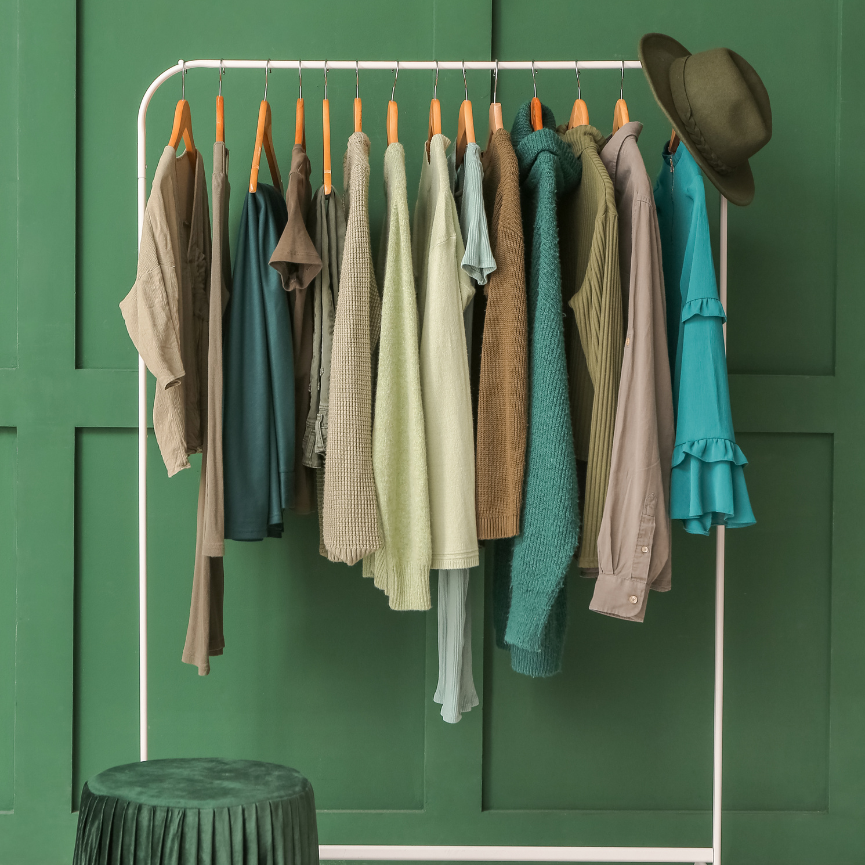
- May 09, 2024
- 191 Views
- 0 Comments
Exploring The Impact Of Sensory-Friendly Clothing In Autism
In today's world, there is a growing awareness of the diverse needs of individuals with autism spectrum disorder (ASD). Autism is a complex neurodevelopmental condition that affects communication, behavior, and sensory processing. While it presents differently in each person, sensory sensitivities are a common thread among many individuals on the spectrum. Sensory-friendly clothing has emerged as an innovative solution to address these sensitivities and improve the quality of life for autistic individuals and their families.
This comprehensive article delves deep into the world of sensory-friendly clothing, examining its significance, design principles, benefits, and the transformative impact it has on the lives of autistic individuals.
Autism, often referred to as Autism Spectrum Disorder (ASD), is a complex neurological condition that affects individuals in varying degrees. It is characterized by differences in social interaction, communication, and behavior. Importantly, many autistic individuals experience sensory sensitivities, which can significantly impact their daily lives.
Sensory sensitivities in autism involve heightened or diminished responses to sensory input. For some, this means experiencing sensations more intensely, such as touch, sound, taste, or smell. Others may have diminished sensitivity to certain stimuli. These sensory issues can lead to anxiety, discomfort, and even meltdowns in response to environmental triggers.
The Role of Clothing in Addressing Sensory Sensitivities
Clothing is a fundamental aspect of daily life, but for many individuals with autism, it can pose significant challenges due to sensory sensitivities. The touch, texture, and construction of conventional clothing can be a source of discomfort and anxiety. This discomfort often leads to individuals with autism avoiding wearing certain clothes or facing sensory overload while doing so.
This is where sensory-friendly clothing steps in as a game-changer. These specially designed garments are created with the unique sensory needs of autistic individuals in mind. They aim to provide comfort, ease, and a sense of security while minimizing sensory triggers.
The Design Principles of Sensory-Friendly Clothing
Sensory-friendly clothing is designed with a keen understanding of the sensory sensitivities that autistic individuals experience. Several key design principles are integral to creating garments that cater to these unique needs.
- Seamless Construction: Sensory-friendly clothing often features seamless designs to prevent irritating seams or labels that can cause discomfort.
- Soft, Breathable Fabrics: The choice of fabric is crucial. Soft, breathable materials like organic cotton or moisture-wicking blends are favored for their comfort and hypoallergenic properties.
- Tagless Labels: Traditional clothing labels can be bothersome for autistic individuals. Sensory-friendly clothing replaces them with tagless labels or printed information.
- Adjustable Features: Many garments include adjustable waistbands, cuffs, and closures to allow for a customizable fit that minimizes discomfort.
- Sensory Considerate Fasteners: These garments often use sensory-friendly fasteners like Velcro, magnets, or snap buttons instead of zippers or traditional buttons.
- Calming Colors: The choice of colors and patterns is made with sensory considerations in mind, favoring soothing and non-distracting designs.
- Reinforced Seams: Clothing items may feature reinforced seams to increase durability, ensuring they can withstand the wear and tear of daily life.
Benefits of Sensory-Friendly Clothing for Autistic Individuals
The adoption of sensory-friendly clothing among autistic individuals has yielded a plethora of benefits, positively impacting their quality of life. Let's explore these advantages in detail.
- Enhanced Comfort: Sensory-friendly clothing's soft, seamless, and breathable design offers a higher level of comfort, reducing irritation and anxiety.
- Improved Independence: Many autistic individuals face challenges with dressing themselves due to fine motor skill difficulties. Sensory-friendly clothing, often designed with easy fasteners and adjustable features, promotes independence.
- Reduced Sensory Overload: By minimizing sensory triggers, these garments help reduce instances of sensory overload and meltdowns, allowing individuals to better navigate their environments.
- Increased Self-Esteem: Wearing clothing that feels comfortable and fits well can boost self-esteem and self-confidence, particularly in adolescents and adults on the spectrum.
- Positive Sensory Stimulation: Some sensory-friendly clothing incorporates tactile elements that can provide positive sensory stimulation, helping individuals self-soothe and manage anxiety.
- Better Sleep Quality: The comfort of sensory-friendly pajamas and sleepwear can contribute to better sleep quality, improving overall well-being.
- Support for Sensory Regulation: Sensory-friendly clothing aids in sensory regulation, helping individuals maintain a sense of calm and focus.
- Inclusivity: These garments promote inclusivity by accommodating the sensory needs of autistic individuals, fostering a sense of belonging and acceptance in society.
The Transformative Impact of Sensory-Friendly Clothing
Sensory-friendly clothing has a transformative impact on the lives of autistic individuals in multiple aspects, as well as their families and caregivers. Let's delve into some of these life-changing effects.
Positive Social Experiences
Autistic individuals may experience social isolation due to their sensory sensitivities and clothing-related discomfort. Sensory-friendly clothing allows them to participate in social activities more comfortably, improving their social integration and reducing feelings of exclusion.
Empowerment and Independence
For parents and caregivers of autistic individuals, sensory-friendly clothing represents a means of empowering their loved ones to dress independently. This fosters self-sufficiency and reduces the stress associated with daily dressing routines.
Enhanced Family Dynamics
The incorporation of sensory-friendly clothing into a family's routine can lead to reduced tension and stress, as it minimizes struggles related to dressing and sensory sensitivities. This, in turn, can enhance family dynamics and quality of life for everyone involved.
Increased Confidence
Wearing sensory-friendly clothing that is both comfortable and stylish can boost the confidence of autistic individuals. This confidence often translates to better self-expression and communication skills.
Stress Reduction
Sensory-friendly clothing reduces the daily stress associated with clothing choices and sensory discomfort. This can lead to a more relaxed and harmonious environment for both individuals with autism and their families.
Inclusion in Education and Employment
Sensory-friendly clothing supports autistic students and employees in feeling comfortable in educational and work environments. This can lead to higher participation, improved concentration, and better overall performance.
Expansion of Sensory-Friendly Fashion Industry
The growing demand for sensory-friendly clothing has spurred innovation in the fashion industry. As the market expands, it creates new job opportunities and promotes inclusivity and awareness.
The Road to Inclusivity
The adoption of sensory-friendly clothing is a significant step towards making our world more inclusive for autistic individuals. It demonstrates a broader societal understanding of the diverse needs and experiences of those with autism.
In addition to sensory-friendly clothing, other industries and sectors are also taking steps to embrace inclusivity. Examples include sensory-friendly environments in public spaces, neurodiverse hiring initiatives in the workplace, and sensory-friendly entertainment options, such as movies and theme parks.
Brands and Initiatives in Sensory-Friendly Clothing
The increasing recognition of the importance of sensory-friendly clothing has led to a surge in brands and initiatives dedicated to producing these specialized garments. Some of the noteworthy names in this field include:
- Tommy Hilfiger's Tommy Adaptive: This collection from the iconic fashion brand offers a wide range of adaptive clothing, including sensory-friendly options. Their designs combine style with functionality.
- retailer specializes in sensory-friendly clothing for children and adults. They offer a broad selection
- Target's Cat & Jack: Cat & Jack is Target's in-house brand, and they offer a variety of adaptive clothing for children. This line includes features such as hidden abdominal access for feeding tubes and sensory-friendly design.
- Sensory Smart Store: This online of garments that cater to various sensory sensitivities.
- MagnaReady: Known for their adaptive magnetic closures, MagnaReady's clothing is an excellent example of functional yet stylish adaptive wear.
- Sensory Goods: This brand specializes in sensory-friendly clothing, blankets, and accessories. They cater to individuals with sensory processing disorders, including autism.
Sensory-friendly clothing is not just a fashion trend; it represents a movement towards inclusivity, understanding, and empowerment for autistic individuals. These specially designed garments provide comfort, independence, and a sense of self-esteem, offering transformative benefits for those on the autism spectrum and their families. It is a testament to the power of innovation and empathy, serving as a beacon of hope for a more inclusive and accommodating world.
As we continue to explore the impact of sensory-friendly clothing, it is essential to remember that progress does not end here. The journey towards a more inclusive world requires ongoing commitment, awareness, and support for individuals with autism and their unique needs. Sensory-friendly clothing is just one piece of the puzzle, but it represents a significant stride towards a brighter, more inclusive future for everyone.



Comments - 0 comments till now